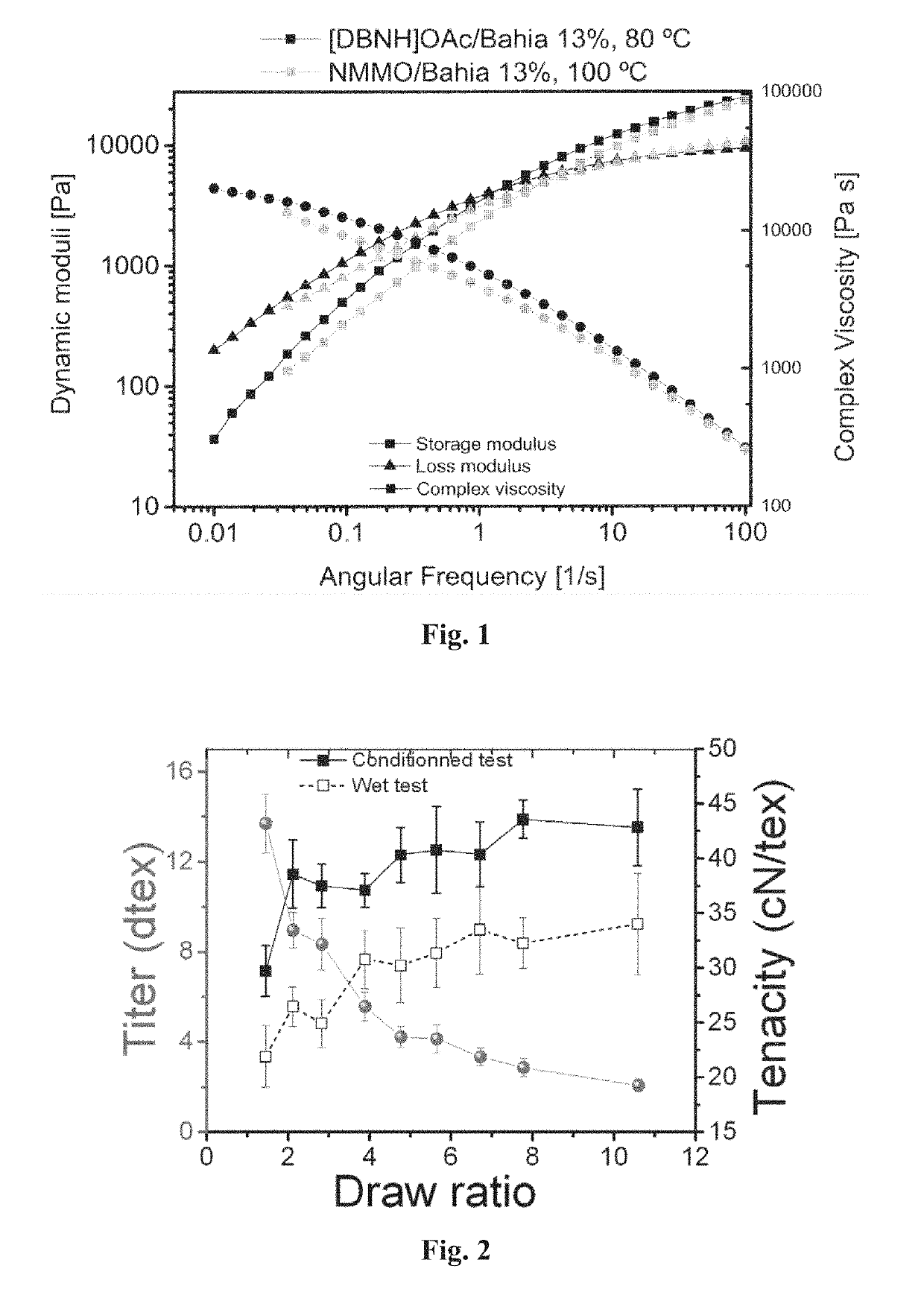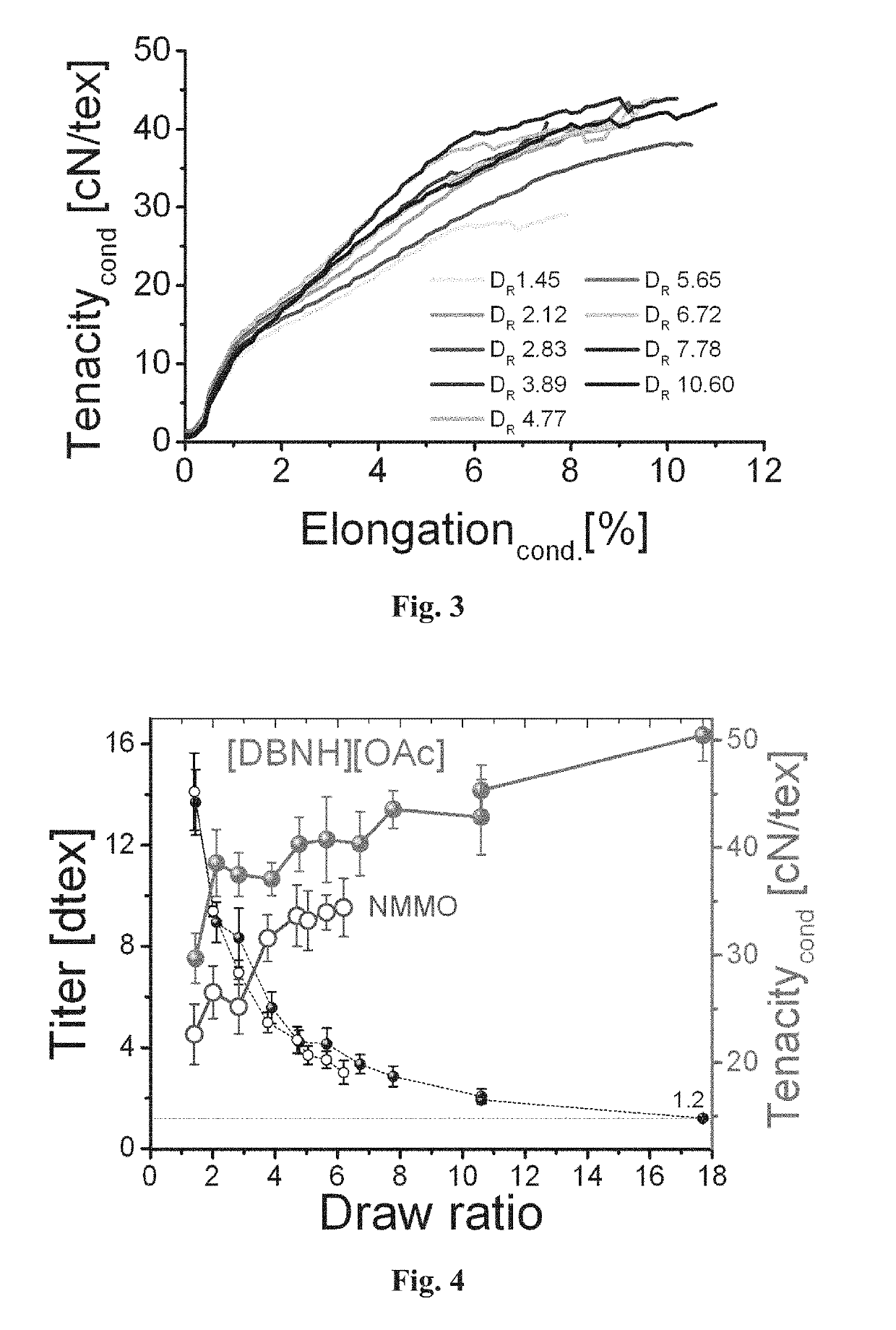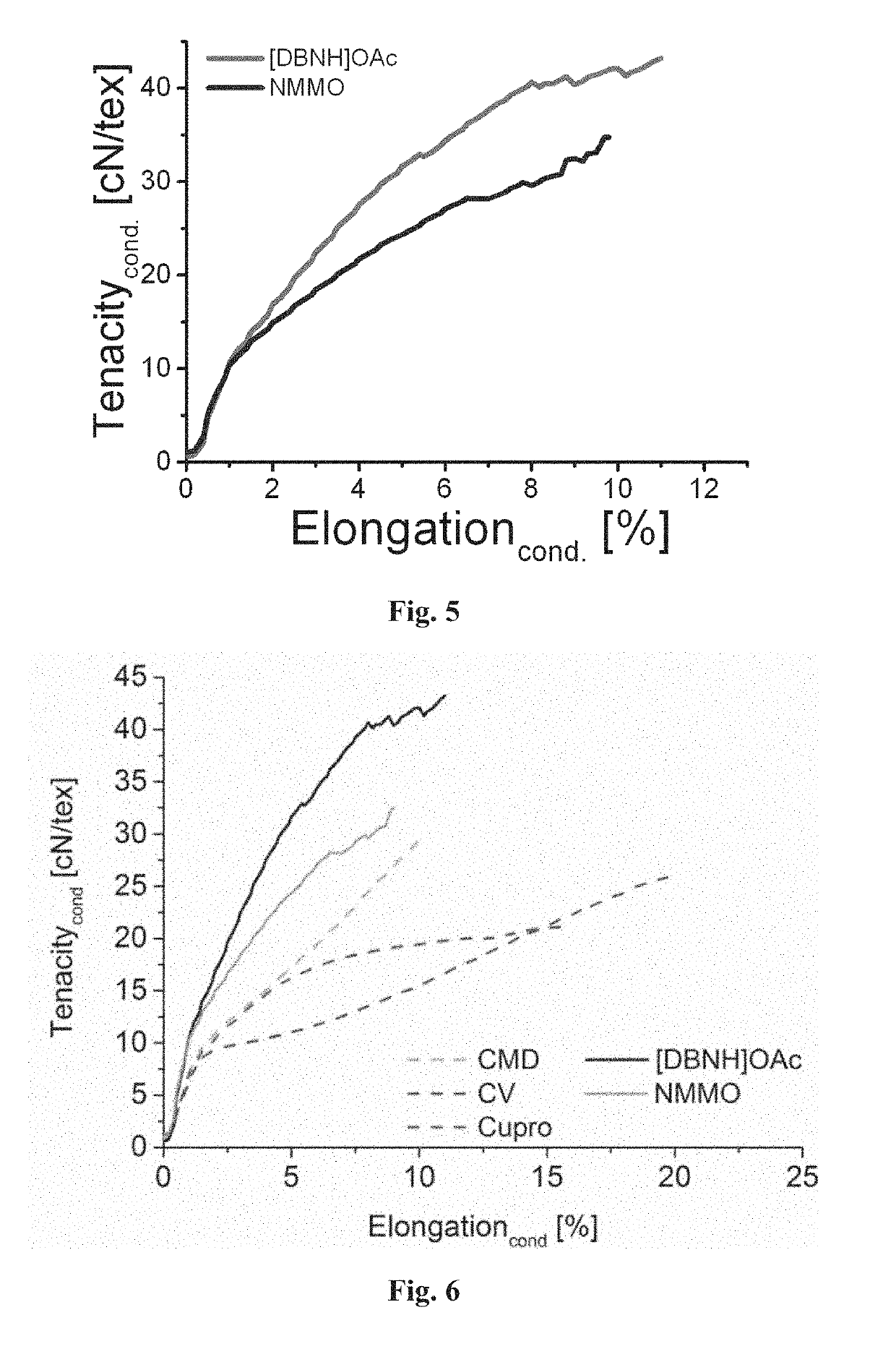Process for the production of shaped cellulose articles
a technology of cellulose articles and cellulose fibers, which is applied in the direction of stretch-spinning methods, artificial filaments from cellulose solutions, textiles and papermaking, etc., can solve the problems of high water consumption, severe environmental stress, and doubts on the promotion of viscose techniques, and achieve high viscosity and low viscosity , the effect of good performance in fibre spinning
- Summary
- Abstract
- Description
- Claims
- Application Information
AI Technical Summary
Benefits of technology
Problems solved by technology
Method used
Image
Examples
example 1
on of the Spinning Dope
[0059]5-20 wt-% pulp (preferentially 10-15 wt-%) are mixed in the neat DBN-based distillable ionic liquid [DBNH][OAc] and the suspension is transferred to a vertical kneader system (or a stirrer at smaller scale). Dissolution proceeds fast (within time periods of 0.5-3 h) at low revolution (10 rpm) and moderate temperature (60° C.-100° C.). The resulting solution can be filtrated by means of a pressure filtration, equipped with a metal fleece filter (fineness 5 μm absolute) and is degassed in a heated vacuum environment. However, those two steps are not necessarily required.
[0060]The spinning dope is then transformed in hot, liquid state to the cylinder of the piston-spinning unit. The spinning conditions are summarized in Example 2 below. The fibres were washed and dried online by means of a washing bath and drying channel, respectively.
[0061]Naturally, it is also possible to transfer the spinning dope as solid pieces at room temperature to the cylinder of th...
example 2
of DBN-Based Dopes
[0062]Spinning dope (13 wt-% pre-hydrolysis eucalyptus kraft pulp in [DBNH][OAc]) prepared as described in Example 1 is spun through a multi-filament spinneret (18 holes, 100 μm capillary diameter) at 80° C. with an extrusion velocity of 0.8 ml / min. The take-up velocity was varied systematically to set different draw-ratios. Temperature of the coagualtion bath: 14-18° C.; the washing bath 50° C., and the drying channel 80° C. Further parameter and the properties of the resulting fibres are given in Table 2 and FIG. 2. The filaments depicted excellent spinning stability over the whole range investigated.
[0063]
TABLE 2Spinning parameter and fiber properties (godet 1: filament up-take after coagulation bath, godet 2: afterwashing bath, godets 3 + 4: after drying channel).Tensile testConditionnedSpinning conditionsTiterForceTen,godet 1godet 2godet 3godet 4drawdtex+ / −cN+ / −Elong. %+ / −cN / tex+ / −788.28.21.4513.851.6140.862.646.581.0029.702.3210.911.712122.129.020.7034.642.30...
example 3
om Lignin and Cellulose Blends
[0064]Lignin from commercial sources (Kraft Lignin) was mixed with commercial Eucalyptus (pre-hydrolysis kraft, PHK) pulp in ratios up to 20:80 and dissolved in [DBNH][OAc] to yield a concentration of 13 wt-%. The spinning temperature was adjusted such that the zero shear viscosity was between 20000 and 30000 Pas. The fibre regeneration was accomplished in water at a temperature of 10-20° C., preferably below 15° C. through an air gap with a fixed length of 10 mm.
[0065]The properties of fibres made from lignin cellulose blends are shown in FIGS. 8 and 9.
[0066]The spinning of these dopes, according to the present invention, shows important advantages over NMMO and [EMIM][OAc]-based dopes. This can be seen in Table 3 below.
[0067]Table 3 shows shear rheology of the spinning dope according to this invention, compared with known NMMO- and [EMIM][OAc]-based spinning dopes
[0068]
TemperatureViscosityωG[° C.]η0 [Pa s][1 / s][Pa][DBNH][OAc]80213061.5410013 wt-%NMMO1...
PUM
| Property | Measurement | Unit |
|---|---|---|
| temperature | aaaaa | aaaaa |
| temperatures | aaaaa | aaaaa |
| temperatures | aaaaa | aaaaa |
Abstract
Description
Claims
Application Information
 Login to View More
Login to View More - R&D
- Intellectual Property
- Life Sciences
- Materials
- Tech Scout
- Unparalleled Data Quality
- Higher Quality Content
- 60% Fewer Hallucinations
Browse by: Latest US Patents, China's latest patents, Technical Efficacy Thesaurus, Application Domain, Technology Topic, Popular Technical Reports.
© 2025 PatSnap. All rights reserved.Legal|Privacy policy|Modern Slavery Act Transparency Statement|Sitemap|About US| Contact US: help@patsnap.com



